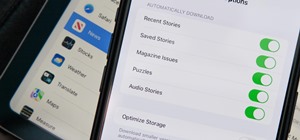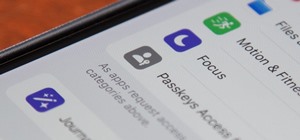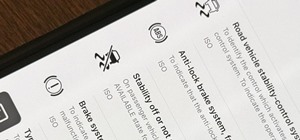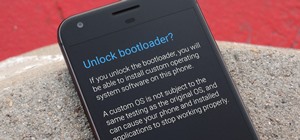ESL teacher Jennifer Lebedev teaches the proper usage of the English verb 'be' in the present tense. The verb 'be' has three forms in the present tense: 'am', 'is', 'are'. Sentences are formed with a subject and a verb. To make sentences with the verb 'be', use the correct for ...more
This ESL how to video teaches you the use of the passive voice in the passive tense in English. The passive voice is the form of a transitive verb, that requires both a subject and one or more objects. In the present tense, the subject changes the verb "be" and then you use th ...more
A lot of the English you hear in the real world isn't taught in the classroom. This ESL tutorial is a quick lesson about using the simple present tense. The simple present tense are actions that are repeated or habitual and statements that are always true. Watch this how to vi ...more
The future: that time that lies ahead, unknown and overwhelming. Whether you're an obsessive planner or someone who can't think more than two days ahead, considering the future can be frightening with all of the "what ifs." Don't let the future keep you awake at night—in fact, ...more
In this video, we learn how to speak English using verb tenses. Verb tenses will not change if you are reporting facts, general truth, or immediate reporting. In all other situations, you will change verb tenses. An example of this is "I will buy balloons" can change to "she s ...more
Revealed! The secret to learning a language quickly. It's a little known technique diplomats and royalty have used for centuries. I lucked up on it by analyzing how I could quickly boost my language and workforce marketability. You get it here by design. The secret to learnin ...more
Learn how to conjugate the French verb "parler" (to speak) in the present tense
Being is a word that can be hard to master for English as a Second Language speakers. It can be used as a gerund, or in present or past continuous tenses. In a present or past continuous tense, being says that it is happening now, or was happening before, in a continual manne ...more
An English teacher shows some of the differences between the present tense and the present continuous tense in making statements, negatives, and questions. For ESL students. If you are learning to speak English, watch this video on present tense vs. present continuous tense.
In this video, we learn how to use the verb "be" in different tenses. This verb changes depending on the verb tense and subject in which it's used. In the present tense, "I am", "we are", "you are", etc can be used. In the past tense "I was", "you were", "he was", "we were", e ...more
This tutorial tells us about using helping verbs with the simple form. It also gives us information on the differences between the present, past and future tenses. •Let us see some words in the simple and past forms. Simple – Live, work, go, wake up Past – Lived, worked, went ...more
Learning American English is often difficult when faced with two words of similar spelling or sound. This is certainly true in the case of "we're" and "were". The first step in knowing proper usage is to know what the two words mean. We're is a contraction for we are. Whenev ...more
First off, don't be frustrated. YOU CAN DO IT! Contrary to the message in the image above, it's NOT over. It's just beginning. And when it comes to solving the New York Times crossword puzzle, the old cliche does apply: practice makes perfect. I've read quite a few books and ...more
In this video, we learn how to speak Spanish: Present tense of -AR verbs (tu form). When you are speaking with "ar" verbs, you will have to change them depending on who you are talking about. You will also have to change if you are talking about yourself and depending on what ...more
In this video, we learn how to speak Spanish using present tense AR verbs. "Nosotros" means "we", "nosotras" means we as well, it's just talking about a female while the other is talking about a male. Common "ar" verbs include: necesitar, patinar, practicar, terminar, tocar, t ...more
Learn how to use the verb "have" that is conjugated in the present tense
In this ESL how to video, an American English teacher explains the how the present perfect tense works in the passive voice. In the English passive voice, S + has or have + been + past participle. Watch this how to video and you'll be speaking English in no time.
Learn how to use the English passive voice in the continuous tense in this tutorial. When the present continuous tense is in the passive voice it looks like this: subject + (be) being + past participle. Watch this ESL how to video and you will be speaking English in no time.
This ESL tutorial shows how to make yes-no questions in the passive voice in the present perfect tense. The passive voice un the present perfect tense uses have or has + subject + been + past participle. Watch this how to video and you'll be speaking English in no time.
Learn how you can use the passive voice in the future tense in this ESL tutorial. To make the future tense passive in English, use "will be" and then the past participle. "Will" is a modal verb, so this formula applies to other modals such as can, may, must, might, etc. Watch ...more
Learn how to pronounce regular verbs in English with this ESL tutorial. In English, the "ed" ending might be a "d" or a "t," depending on what comes before it. Watch this how to video and you'll be speaking English in no time.
In this tutorial, we learn how to speak English with conditionals. Conditional statements need special attention and usually start with the word "if". An example of a conditional statement is "if you want, we'll go out to dinner". This has two parts, a condition, and a result. ...more
In this video, we learn how to speak Spanish by using the present tense of AR verbs. For females, "ellas" means they and for males "ellos" means they. To say "you all" you would say "ustedes". For example, the word "trabajar" would knock the "ar" off depending on who was the s ...more
Some modal verbs can be put in front of the continuous form to express some present action that is or isn't happening. To make the past tense for each, use "have been" instead of "be."
In this ESL tutorial you will learn how to use the passive voice in the past continuous tense in Englishi. The passive voice is the form of a transitive verb, that requires both a subject and one or more objects. To put the past continuous tense into the passive voice, use "wa ...more
In this video, learn about los verbos relexivos. Some examples of daily use actions: Yo me cepillo los dientes. This means I brush my teeth. For most beginning students of Spanish, one of the hardest things to understand is verbs. That’s because verbs in Spanish act differentl ...more
This is the eighth episode of "Walk, Talk and Learn French" provided by Radio Lingua Network and it focuses on French verb in the imperfect tense. The video mixes a host providing real life French, while speaking in both French and English, and provides examples with charts an ...more
This three part language tutorial is a grammar lesson for lower level ESL students. Learn how to use the simple past tense with this tutorial. The past simple tense, also called the simple past is used for past actions that happened either at a specific time, which can either ...more
Check out this instructional language video to learn how to speak Cherokee! In this lesson, learn how to conjugate the verb "To Sing" in the imperative (the command form), the future tense, and the present continuous verb tense. This is in the Eastern (Giduwa) Cherokee dialect ...more
In my early life I was deeply impacted by the work of physician and psychoanalyst John C. Lilly. I still have my dog-eared copies of The Mind of the Dolphin (1967) and Programming and Metaprogramming in the Human Biocomputer (1968). Lilly's work, with dolphins and the developm ...more
Ok, so you've memorized the list of valid 2-letter words, but when challenged after playing one, can you smugly demonstrate your dominating intellect by spouting out the proper definition? If you're anything like me, chances are you'll find yourself babbling something defensi ...more
Making your way into an online community can be really exciting. Some life-long friendships and lasting romances begin in humble chat rooms and message boards. But for the novice internet user, one of the biggest hurdles can be trying to figure out just what people are saying ...more
Via WonderHowTo World, SCRABBLE: Dirty SCRABBLE. Everybody likes to play dirty, but we're not talking bluffing with fake words or closing up the board—we're talking actual "dirty" and offensive words. Despite the exclusion of offensive words in the bowdlerized Official SCRAB ...more
Dirty SCRABBLE. Everybody likes to play dirty, but we're not talking bluffing with fake words or closing up the board—we're talking actual "dirty" and offensive words. Despite the exclusion of offensive words in the bowdlerized Official SCRABBLE Players Dictionary (OSPD), the ...more
An English teacher shows how to make the present perfect tense in the form of a question.
The word 'haben' is a very common German word, which means, 'to have' or 'to possess.' Depending on the structure of the sentence in which it is used, the verb changes its spelling in one of several ways. This video explains how to conjugate 'haben' in the present tense, and g ...more
Takanori Tomita teaches you the difference between masu and mashita. You will learn how to make a present tense sentence and past tense sentence by using perfective and imperfective tenses in Japanese.
In this two part tutorial an English teacher shows some differences between the present tense and the present perfect tense. You will learn the basics, in how to ask a proper question. Watching this will allow you a little more understanding of the English language and how to ...more
Learn to conjugate the French verb "écrire" (to write) in the present tense
Learn how to conjugate the French verb "revenir" (to return) in the present tense
Learn how to conjugate the French verb "porter" (to carry) in the present tense
Learn how to conjugate the French verb "faire" (to do) in the present tense
Learn how to conjugate the French verb "dire" (to say) in the present tense
Learn how to conjugate the French verb "croire" (to believe) in the present tense
Learn how to conjugate the French verb "comprendre" (to understand) in the present tense
Learn how to conjugate the French verb "appeler" (to call) in the present tense
Conjugate the French verb "devenir" (to become) in the present tense.
Learn how to conjugate the French verb "prendre" (to take) in the present tense.
Learn how to conjugate the French verb "mettre" (to put) in the present tense.
Learn how to conjugate the French verb "entendre" (to hear) in the present tense.
Learn how to conjugate the French verb "arriver" (to arrive) in the present tense.
Learn how to conjugate the French verb "avoir" (to have) in the present tense.
Learn how to conjugate the French verb "vouloir" (to want) in the present tense
Learn how to conjugate the French verb "sortir" (to go out) in the present tense
Learn how to conjugate the French verb "regarder" (to look at) in the present tense
Learn how to conjugate the French verb "falloir" (to be necessary) in the present tense.
Watch to learn how to conjugate the French verb "aller" ("to go") in the present tense.
This episode goes over how one can ask and respond in the past tense when speaking in English. This video is great for advanced, intermediate, and beginner learning to speak the English as a second language (ESL).
In this episode learn to ask negative questions with "don't" followed by a verb and "to be" in the English language. This video is great for advanced, intermediate, and beginner learning to speak the English as a second language (ESL).
In this episode you will learn how to use the present perfect when discussing your experiences in the English language. This video is great for advanced, intermediate, and beginner learning to speak the English as a second language (ESL).





























































